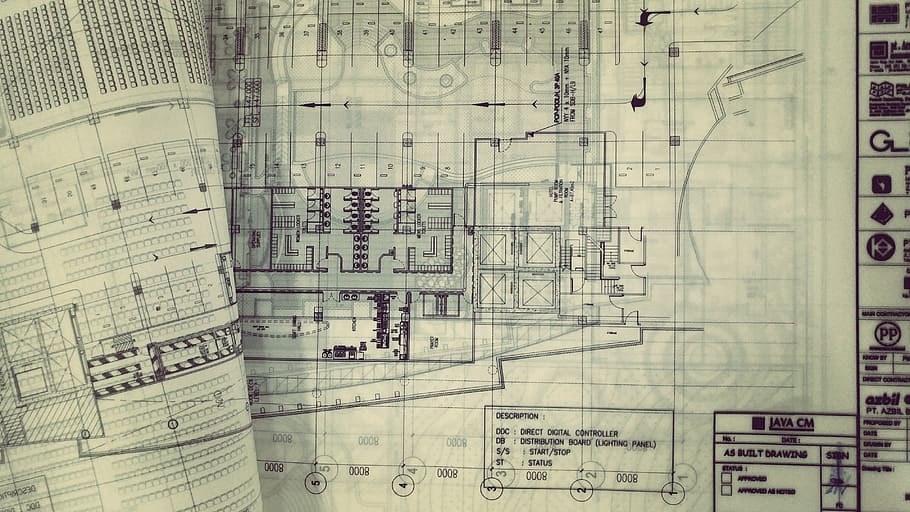
Overhead Electrification (OHE) project planning involves the systematic approach to design, implement, and maintain the electrification of railways using overhead equipment to power the trains. Here are the key steps in planning an OHE project:

Define the project’s scope, objectives, and expected outcomes, including the length of track to be electrified, type of trains, energy efficiency goals, and electrification standards.
Conduct a thorough survey of the railway route to assess feasibility, evaluate the terrain, identify potential challenges, and determine the optimal locations for electrification infrastructure.
Ensure compliance with local and national regulations governing electrification projects. Obtain necessary permits and approvals from relevant authorities.
Develop detailed engineering designs for the overhead electrification system, considering factors like traction requirements, clearance, catenary design, substations, and other necessary components.
Determine the resources required for the project, including materials, labor, specialized equipment, and financial allocations. Plan for procurement and resource management throughout the project.
Identify potential risks associated with the project and create strategies to mitigate them, focusing on safety, timelines, costs, and technical challenges.
Execute the construction phase, including installing the overhead structures, wires, substations, and associated components according to the approved design and safety standards.
Conduct comprehensive testing of the electrification system to ensure it meets safety and performance requirements. Commission the system and validate its functionality.
Integrate the electrification system with trains, ensuring seamless compatibility and effective power supply to the rolling stock.
Train relevant personnel on the operation, maintenance, and safety procedures of the electrification system. Involve stakeholders for a smooth transition and effective utilization of the electrified tracks.
Develop plans and protocols for ongoing maintenance, monitoring, and upkeep of the electrification system to ensure its efficiency, safety, and longevity.
Document all aspects of the OHE project, including designs, plans, execution details, testing results, and post-implementation reports. Provide regular updates and reports to stakeholders and project sponsors.
By following a structured OHE project planning approach, the electrification of railway tracks can be efficiently and effectively executed, leading to a more sustainable and energy-efficient transportation system.
A survey in the context of Overhead Electrification (OHE) involves a comprehensive examination and assessment of the railway route to determine the feasibility and requirements for implementing an overhead electrification system. This survey is a crucial initial step in planning and executing an OHE project. Here’s an overview of what the survey entails:

Conduct a thorough evaluation of the railway route where electrification is planned. Assess factors such as track layout, curvature, gradient, clearances, and any potential obstructions.
Examine the landscape and terrain along the route to understand the topography, including hills, valleys, bridges, tunnels, and other features that may affect the installation and functioning of the OHE system.
Determine the optimal spacing for support structures (masts, cantilevers) that will hold the overhead wires. Analyze the existing or required infrastructure for anchoring and supporting the overhead equipment.
Ensure compliance with electrification standards and regulations set by relevant authorities. Verify that the proposed electrification design aligns with safety and performance standards.
Evaluate the availability and capacity of the power supply needed to electrify the railway route. Analyze the distribution network and identify any upgrades or modifications required for effective power distribution.
Visit the proposed installation sites for key components such as substations, feeder points, auto-transformer stations, and other critical infrastructure to gather necessary data for design and planning.
Assess the potential environmental impact of the electrification project, including considerations for wildlife, vegetation, noise levels, and visual impact. Plan measures to minimize adverse effects.
Document all findings, measurements, observations, and assessments in a detailed survey report. Include recommendations, potential challenges, and considerations for the subsequent stages of the OHE project.
The results of this survey are used to design and plan the overhead electrification system, guiding decisions on the placement of infrastructure, wire routes, and support structures. This data is crucial for successful implementation and ensures the electrification project aligns with safety, efficiency, and regulatory requirements.
Overhead electrification (OHE) is a critical component in electrified rail systems. The procedure for drawing-making in OHE involves several steps:

Understand the project requirements, including the type of rail system, train speeds, and power requirements.
Conduct surveys to assess the site conditions, including the terrain, existing structures, and other relevant factors that may affect the OHE design.
Determine the alignment and route for the overhead electrification system, considering factors like curves, gradients, and clearance requirements.
Develop designs for supporting structures such as masts, portals, cantilevers, and foundations based on the site assessment and alignment considerations.
Design the catenary system, including the wires, droppers, tensioning arrangements, and insulators, to ensure proper power transmission and safe operation.
Design the electrical components, including substations, feeder lines, and distribution systems, to ensure efficient power distribution along the rail network.
Ensure that the designs comply with safety standards, regulations, and specifications set by relevant authorities.
Coordinate the OHE design with other aspects of the rail system, such as signaling, telecommunications, and track design, to ensure seamless integration.
Use computer-aided design (CAD) software to create detailed drawings and schematics of the OHE components, including structures, catenary system, and electrical layouts.
Conduct internal and external reviews of the drawings to ensure accuracy, compliance with specifications, and feasibility. Obtain necessary approvals from relevant stakeholders.
Maintain comprehensive documentation of the designs, including drawings, calculations, and specifications, for future reference and project documentation.
Supervise and manage the installation of the OHE system based on the approved drawings and designs, ensuring quality and adherence to safety standards.
Conduct rigorous testing of the installed OHE system to verify its functionality, safety, and performance before commissioning for regular rail operations.
Establish a maintenance and monitoring plan to ensure the OHE system’s ongoing functionality, safety, and efficiency throughout its operational life.